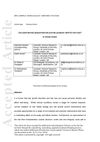Medical Management of Male Pattern Hair Loss
August 2000
in “
International Journal of Dermatology
”

TLDR Minoxidil and finasteride can slow or halt hair loss, but may have side effects.
Male pattern hair loss, or androgenetic alopecia, is a common condition that affects up to 80% of men over the age of 70. It is caused by genetic factors and the hormone dihydrotestosterone (DHT). Hair transplantation is an effective but costly and traumatic treatment option. Topical minoxidil and oral finasteride are pharmaceutical treatments that have shown efficacy in slowing or halting hair loss and even producing improvement in some cases. Finasteride, a specific inhibitor of the type II 5α-reductase isozyme, has been shown to lower DHT levels in the scalp and has been approved for use in androgenetic alopecia. However, it may cause adverse effects on sexual function and is contraindicated in pregnant women. As new treatments become available, general practitioners and dermatologists need to be aware of what can be achieved. In some cases, concern about hair loss may require psychologic help.









